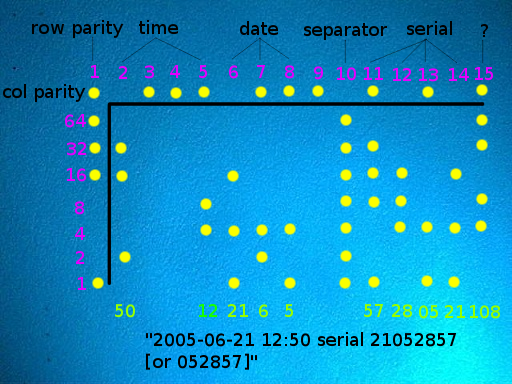Your Printer is SPY-ing on you – Really.
January 23, 2025

Your Printer is SPY-ing on You – Really
Did you know that your printer could be secretly tracking your every move? It's been happening for over two decades, and chances are, you’ve never noticed. Every printer you’ve used since 2001, especially color laser printers, has a hidden coded signature embedded in your printed documents.
Sounds like something out of a spy movie, right? But it’s all too real.
How It Works
Most modern color laser printers and copiers include an invisible, coded watermark—small, nearly imperceptible yellow dots printed on every page. These dots contain hidden metadata, such as:
- The printer's serial number
- The date and time the page was printed
- In some cases, the printer’s location
You can’t see these dots with the naked eye, but authorities can decode them. That means any document can be traced back to the printer—and potentially, to you.
Why Was This Technology Created?
This was originally designed as an anti-counterfeiting measure. The U.S. government pushed for printer manufacturers to include these tracking dots as a way to identify where fake currency might be produced.
But here’s the kicker: this tracking isn’t just limited to counterfeiters. In the age of mass surveillance, these invisible marks can be used to trace any document—personal, private, or political—without your knowledge or consent.
The Privacy Implications
Let’s say you print an anonymous flyer, a whistleblower document, or even a simple letter. Without realizing it, your printer has already signed it. Now, if that document falls into the wrong hands, it can be traced directly back to you.
And here’s the scary part: there’s no law preventing the government—or any other entity—from using this information however they see fit. There’s no public oversight. No regulations. Just a quiet, built-in tracking system humming away in your printer.
Crazy Wiki page
https://en.wikipedia.org/wiki/Printer_tracking_dots
This is the MATRIX decoder for the dots

Can You Opt Out? Not Really.
Right now, the only supposed safeguard is your printer manufacturer’s privacy policy, which—let’s be honest—is hardly comforting. With no real regulations, governments and corporations alike can exploit this technology however they want.
What Can You Do About It?
If this feels like an invasion of privacy, you're not alone. Groups like the Electronic Frontier Foundation (EFF) have been fighting to bring awareness to these tracking dots, pushing for transparency and better consumer protections.
Some Steps You Can Take:
- Be aware that everything you print could be tracked.
- Use older printers that don’t have tracking features (yes, this is a thing!).
- Pressure manufacturers and legislators to address this growing privacy concern.
- Stay informed with organizations like EFF.
Final Thought
The next time you hit print, take a moment to think:
That seemingly innocent document might be sharing more than you think.
